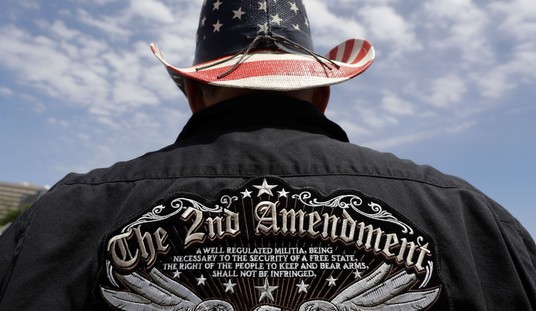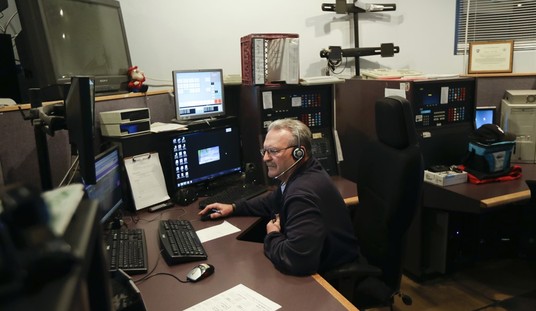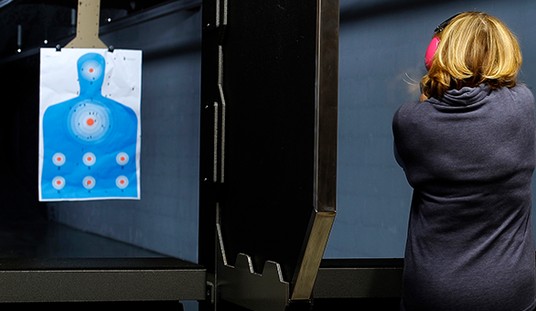 The law allows a policeman to command a citizen to come to his aid. The reverse is not true. In 1849, Jonathan W. Pottle was held captive and forced to pay $2,500 for his release. Mr. Pottle thought that this was unreasonable because the sheriff was present during the extortion and refused to assist him. As a loyal American, Mr. Pottle sued over this failure to act, and lost. In an 1855 decision the United States Supreme Court perfunctorily recited the facts, and ruled that there is no right to police protection and no right to sue over its lack.
The law allows a policeman to command a citizen to come to his aid. The reverse is not true. In 1849, Jonathan W. Pottle was held captive and forced to pay $2,500 for his release. Mr. Pottle thought that this was unreasonable because the sheriff was present during the extortion and refused to assist him. As a loyal American, Mr. Pottle sued over this failure to act, and lost. In an 1855 decision the United States Supreme Court perfunctorily recited the facts, and ruled that there is no right to police protection and no right to sue over its lack.
Since that decision, there has been no right to police protection recognized in the United States. It could have been worse. More recently, women in a Washington D.C. home were raped and tortured while other women, hidden upstairs, twice called for help. Twice officers drove past the house without investigating. The hidden women were then discovered and tortured over a fourteen hour period. They sued. The court was sympathetic, but ruled there was no cause of action.
The states have the same philosophy. In a Missouri case, an outraged community sued their sheriff demanding that the court order him to perform his duty. The requested order was to force the sheriff to close a facility that did not measure up to community standards; or at least those members of the loyal American community that filed lawsuits. The court refused to issue the order. A long chain of federal and state cases state that police have a responsibility to protect the community as a whole, but no duty to protect any individual within that whole. It may help to visualize the metaphysics of the philosophy to realize that the point is to prevent victims of crime from suing the police.
The courts have allowed that the police must protect persons with a “special relationship” to the police. Such relationships are so special as to be nearly extinct. In my early years at the bar, the courts found special relationships in cases involving drunk drivers and protective orders. Federal courts have put an end to these special relationships. On May 16, 2006, the First Circuit Court of Appeals ruled in McCloskey v Mueller III, finding that the FBI had no duty to arrest a violent criminal. The criminal in question, Gary Lee Sampson, had called the FBI and advised them that he wanted to surrender on an armed robbery warrant. The FBI did not oblige.
Reacting badly to the perceived snub, Mr. Sampson murdered three people. Their estates sued, but the court ruled that the FBI had no duty to the victims.
Protective orders in adult abuse cases typically require police action to protect the subject. However, the Supreme Court has put an end to this fuzzy thinking. In Town of Castle Rock v Gonzales, Jessica Gonzales had obtained a protective order against her husband. The order contained a “Notice to Law Enforcement Officials” which stated:
You shall use every reasonable means to enforce this restraining order. You shall arrest, or . . . seek a warrant for the arrest of the restrained person when . . . the restrained person has violated or attempted to violate any provision of this order . . .”
The husband violated the order by kidnapping the couple’s three children. Ms. Gonzales notified the police repeatedly, alerting them to the protective order and even the location of her husband. Mr. Gonzales subsequently murdered the children. The Court ruled that the explicit language of the order did not require the police to do anything and provided no cause of action.
There is not even the right to have the police patrol one’s neighborhood. In 1972, Kansas City, Missouri conducted a patrol experiment to discover the impact of vehicle patrols on crime rates. Some neighborhoods received increased patrols, some the same level, some none at all. The neighborhoods involved were not informed they were part of a test, much less given a choice as to which group they could join. The experimenters were surprised to find that vehicle patrols made no difference in crime rates or citizen satisfaction. A later withdrawal of patrols was less popular. On June 1, 1996, drug dealers in the area of 27th and Benton in Kansas City became outraged at the arrest of one of their guild and rioted. Police units were withdrawn from the area in order to allow emotions to burn themselves out. While doubtless good operational practice, it was a trifle hard on the citizens at 27th and Benton. The rioters burned a passing car and attacked the owner.
It might have been worse. During the April 1980 riots in Miami, police headquarters was under siege by the rioters. It could be a great deal worse. National Guard troops assigned to guard airports after 9-11 carried unloaded weapons in many cases. It appears that some commanders were more concerned about a John Wayne mentality among their troops than they were about terrorists in the airport. It might have been a very great deal worse. In 1919, the Boston police went on strike for 102 days and Home Guard units formed for WW I had to be called in.
One can never be certain of police response. There are regular “blackouts” in Kansas City when no police officer is available for any call. When they are available, there is no guarantee they can be called. The Kansas City emergency communications system is notorious for dead spots, areas where it functions badly or not at all. Even the Plaza, a fashionable shopping district less than five miles from the communications building, has numerous dead spots endangering police, firefighters, and citizens.
A Kansas City police officer, while vainly radioing for backup, was shot and wounded by a drug dealer. Officers were a minute away, but the radio crackled and hummed ineffectively, telling the assailant that the officer was alone and vulnerable. The officer sued the radio system builders. It is possible to sue such outside parties, but not possible to sue the police.
When police are available and can be called, they may not respond. A New York City woman pressed a silent alarm when an armed robber entered her business. The alarm company called 911; the operator, however, garbled the name of the business. The lady was murdered while the authorities put it down as a false alarm. After her funeral, the company received a letter threatening no response if there were further such alarms.
A Kansas City businessman was alerted to a burglary by his alarm company. He went to his business, expecting to be met by the police, only to find himself pursuing the burglar alone. The alarm company had called 911, but the dispatcher refused to send police officers because the business’ alarm permit had expired. In fact, the alarm permit had not expired. A permit system intended to limit false alarms has instead been used to limit police protection.
The ACLU has provided video cameras to residents of a crime-ridden St. Louis neighborhood. The cameras are not to provide evidence of crime, but to document police brutality. While police brutality does occur, the effort is not likely to speed officers to calls in the neighborhood.
The problem of “de-policing” has arisen since the Cincinnati riots of 2000. The term describes a demoralized police force which no longer initiates action out of fear of criticism, police discipline, civil suits, and even criminal charges. In the last twenty years, “community policing” has relied on aggressive enforcement of seemingly minor laws on the theory that lack of enforcement indicates a tolerance of serious crime. With criminals filing bogus criminal charges against aggressive officers, and wild charges of racism (some both wild and true) many officers are reluctant to exercise the requisite aggression.
When the system functions, and an officer is available, and an officer responds, it may still not be enough. One department’s policy is to wait for backup when responding to domestic violence reports. This sensible practice had a woman stabbed to death while a police officer sat in his car three doors away, waiting for backup.
Police response is directly related to police contact. This contact is tied to cell phone coverage and the 911 system. Cell phone coverage can be eccentric and dependent on the reliability of electronic devices. Even today, not all of Missouri is covered by the 911 system, and there is no map of the places that are not covered (for those who like surprises). Some places have the equipment to locate a 911 call from a cell phone to within 75 yards, but most can only narrow it down to the nearest cell phone tower. A Missouri cell phone user can dial *55 and be linked to a Highway Patrol headquarters, but not necessarily the nearest headquarters.
Police are recruited from “Type A” aggressive personalities. They want to rescue people and charge into danger; it is their nature. However, they are ruled by bureaucrats and politicians both in and out of uniform. If these rulers decide that a person or persons shall not receive police protection, there is no recourse. One federal court has proclaimed that “there is no constitutional right to be protected by the state against being murdered by criminals or madmen.” Fortunately, there is a constitutional right to the means to defend ourselves.








Join the conversation as a VIP Member